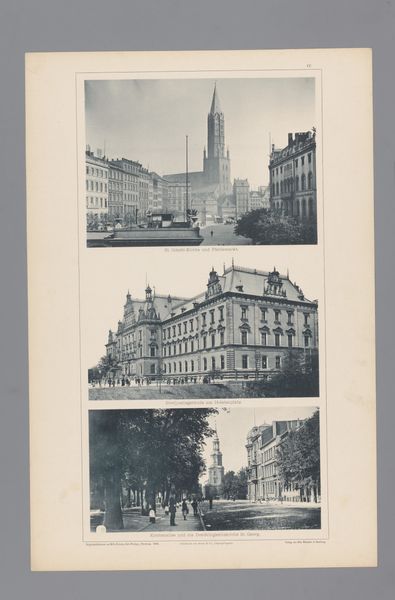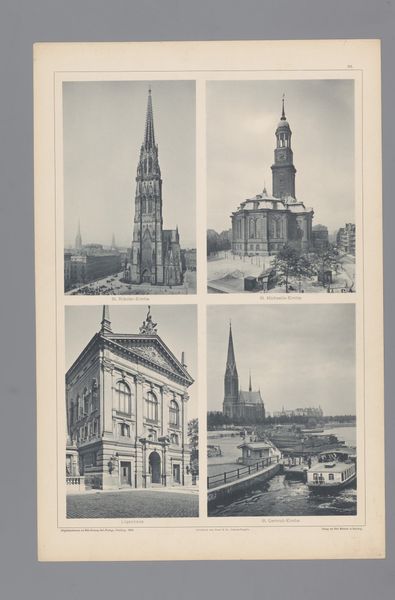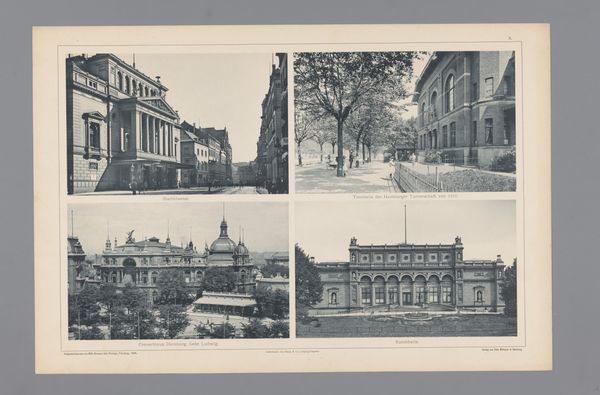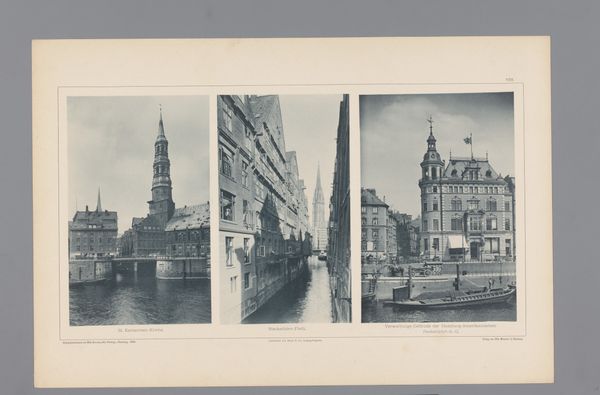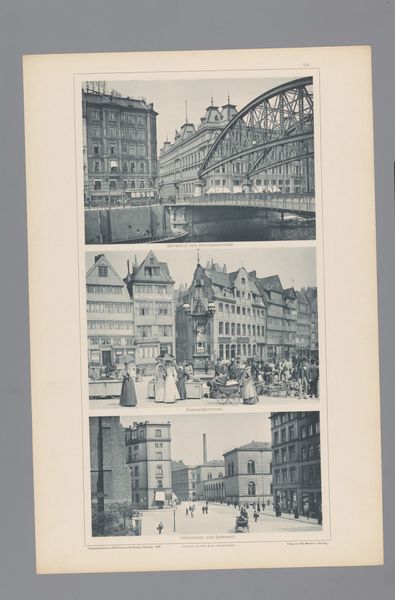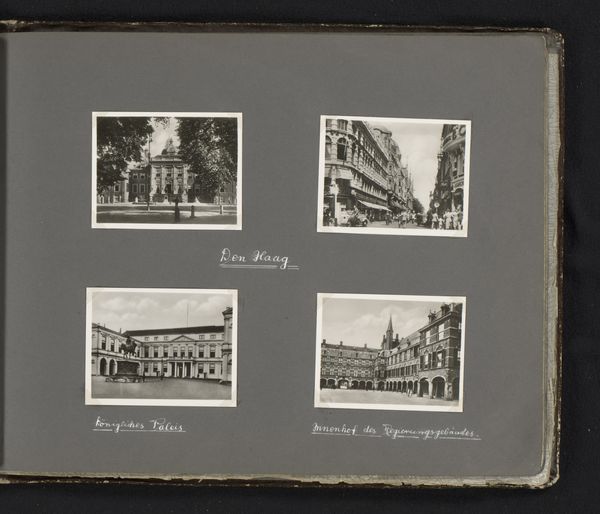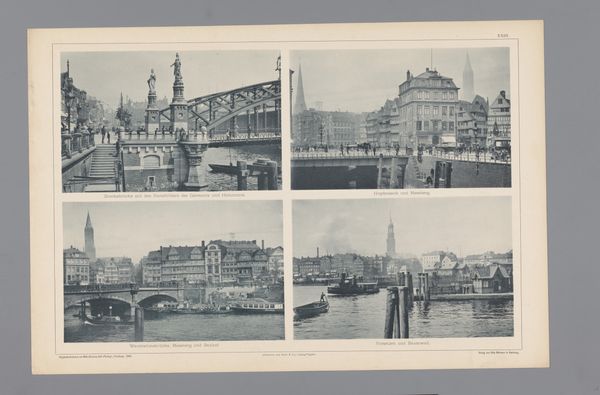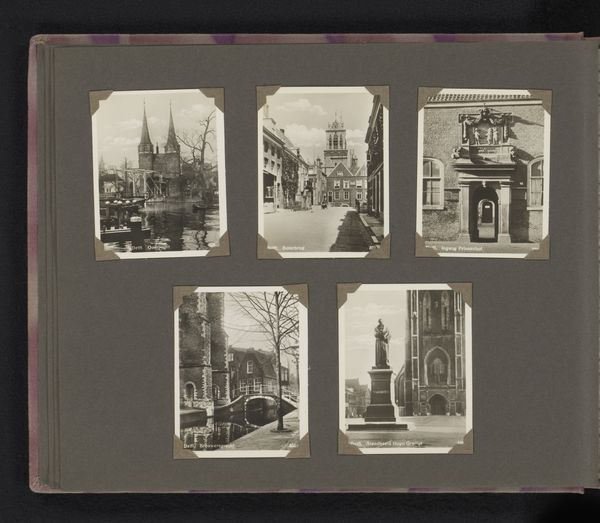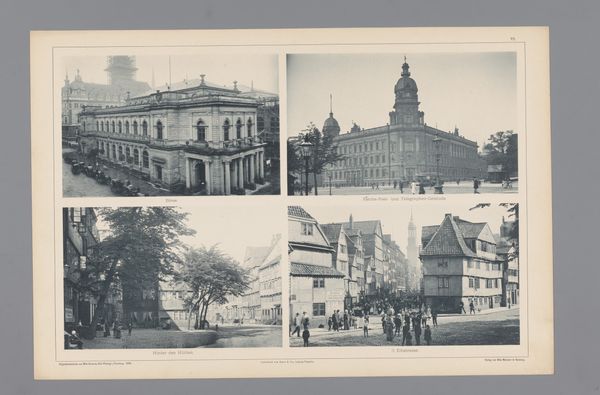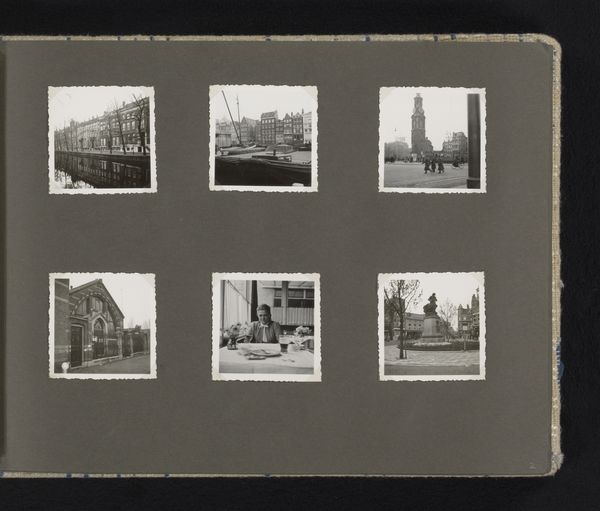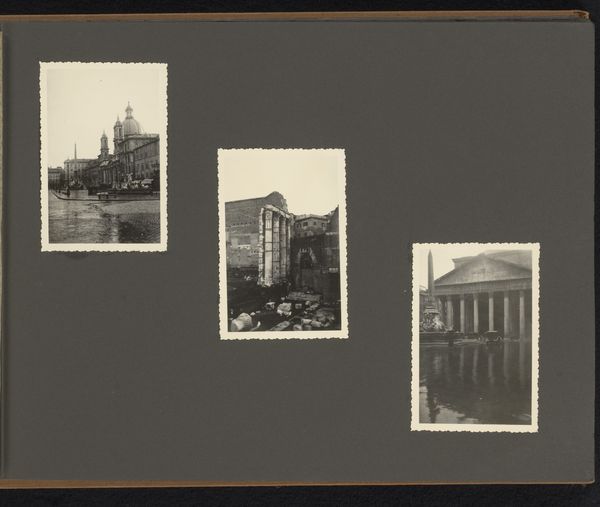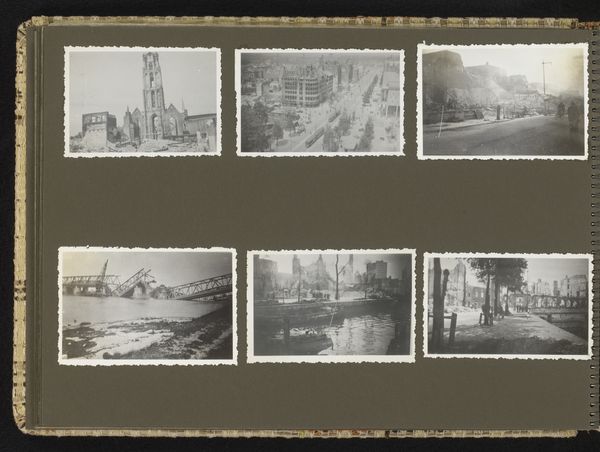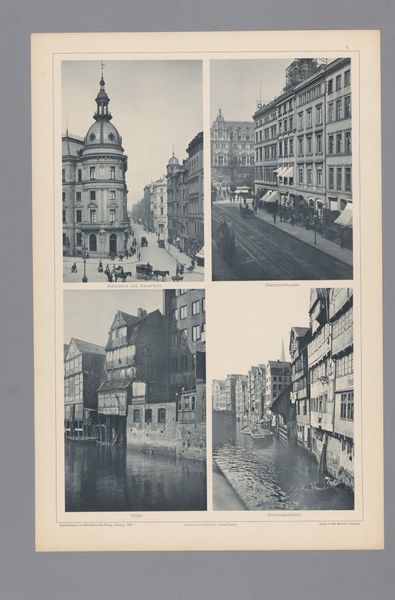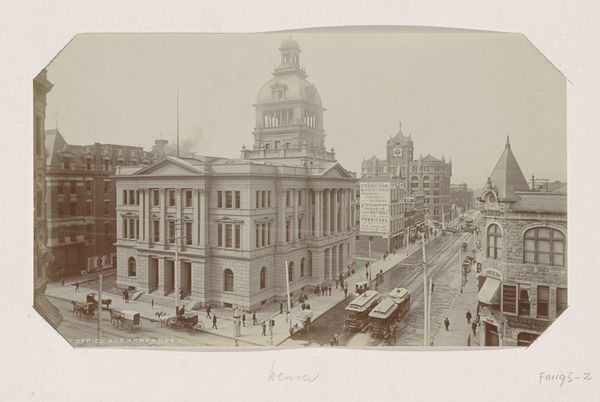
photography, gelatin-silver-print
#
photography
#
gelatin-silver-print
#
cityscape
#
realism
Dimensions: height 70 mm, width 90 mm, height 210 mm, width 290 mm
Copyright: Rijks Museum: Open Domain
Editor: This is an intriguing photo album page entitled "Brussel," possibly created between 1940 and 1945, using gelatin-silver prints. The crisp monochrome shots capture iconic cityscapes. It's hard to ignore the historical context; the war would have been underway. What significance might these architectural depictions hold during such a time? Curator: That's a crucial point. These photographs, presented as a collection, become more than simple cityscapes. They’re acts of preservation. Consider who might have commissioned or compiled this album during the war years. Were these images intended as patriotic symbols, a testament to enduring national identity during occupation? The choice of architecture, devoid of overt political symbols, is interesting, isn't it? Editor: Definitely! Each building feels symbolic. Is it possible that the very act of documenting these structures represented resistance or perhaps a longing for pre-war normalcy? Curator: Precisely. Photography itself carries political weight. This collection becomes a visual argument. Think about the function of architecture historically. These aren’t just buildings, they are physical manifestations of power, commerce, faith, and community. What happens when those spaces are threatened? How do you preserve identity when control of spaces becomes contested? Editor: So the album becomes a subtle, yet potent statement about cultural resilience and remembrance. Even in the face of conflict. The framing, as a collection of photographs pasted into a binder...it adds a personal layer. Curator: Indeed. The individual, assembling this, made deliberate choices. What message do these buildings, carefully captured and preserved, send to viewers then, and what meaning do they offer to us now? It asks us to reflect on the city, power, and cultural continuity across time. Editor: I hadn’t thought about it that way. Viewing these images with a socio-political lens really enriches the historical and emotional depth. Thank you! Curator: My pleasure! History lives within art. Recognizing these links can offer new readings of seemingly straightforward pictures.
Comments
No comments
Be the first to comment and join the conversation on the ultimate creative platform.
